In recent years, the contact grill market has seen a surge in popularity across the globe, particularly in Western countries. This article delves into the factors driving this trend, the key players shaping the industry, technological advancements, market size, regulatory landscapes, distribution channels, and the future outlook for contact grill manufacturers on a global scale.
Introduction to Contact Grill Makers in the European and American Markets
In the heart of the European and American kitchen appliance markets, contact grills have emerged as a favorite among culinary enthusiasts and home chefs alike. These compact, versatile cooking tools have revolutionized the way we sizzle, grill, and sear our favorite meats and vegetables. Let’s dive into the world of contact grill makers, exploring their presence and impact in these dynamic markets.
The contact grill, often referred to as a flat-top grill or a countertop grill, is a marvel of modern cooking technology. It combines the convenience of a stovetop with the flavor of a grill, allowing for quick and even cooking on a flat surface. This unique feature makes it an ideal choice for those who love outdoor grilling but lack the space or time to set up a traditional barbecue.
In Europe, contact grills have been embraced by a variety of cultures, each bringing their own culinary flair to the art of grilling. From the bustling streets of Paris to the cozy homes in the Netherlands, these grills have become a staple in many kitchens. The European market is known for its preference for high-quality, durable appliances, and contact grill makers have responded by offering a range of products that cater to this demand.
Similarly, in the United States, contact grills have gained a strong following. The American market is vast and diverse, with consumers looking for appliances that not only perform well but also offer a touch of innovation. Brands like George Foreman and Breville have capitalized on this trend, creating contact grills that promise to deliver restaurant-quality results at home.
One of the key factors driving the popularity of contact grills in both Europe and America is the convenience they offer. These appliances are compact, easy to store, and require minimal cleanup. They are perfect for those who enjoy the taste of grilled food but don’t want to deal with the mess and time-consuming nature of traditional grilling methods.
Another factor is the versatility of contact grills. They can be used to cook a wide range of foods, from steaks and burgers to vegetables and seafood. The even heat distribution ensures that each piece of food is cooked to perfection, with a beautiful grill mark on the outside and a juicy interior.
When it comes to contact grill makers, there are several notable brands that have made a name for themselves in the European and American markets. In Europe, brands like Tefal, Gaggenau, and Smeg are known for their high-quality, stylish appliances that blend seamlessly into modern kitchen designs. These brands often feature advanced technologies such as adjustable heat settings, non-stick surfaces, and easy-to-use controls.
In the United States, the landscape is equally competitive, with brands like Hamilton Beach, Cuisinart, and Black & Decker offering a wide range of contact grills. These brands cater to different budgets and cooking needs, from budget-friendly models to premium options with extra features like digital temperature controls and removable drip pans.
Innovation has also played a significant role in the success of contact grill makers. Over the years, these brands have introduced a variety of features and technologies to enhance the cooking experience. For example, some contact grills now come with adjustable heat settings that allow users to control the cooking temperature more precisely. Others have integrated advanced non-stick coatings that make cleaning easier and extend the life of the appliance.
Sales data reflect the growing popularity of contact grills in both Europe and America. Market research indicates a steady increase in sales, with consumers increasingly seeking out these versatile cooking tools. This trend is expected to continue as more people discover the convenience and flavor that contact grills can bring to their kitchen.
In the European and American markets, contact grill makers are also mindful of the regulatory environment. Compliance with safety standards and certifications is crucial for any kitchen appliance, and contact grill manufacturers take this seriously. They ensure that their products meet the necessary safety requirements, giving consumers peace of mind when using these appliances.
The distribution channels for contact grills are diverse, ranging from traditional brick-and-mortar retailers to online marketplaces. This allows consumers to easily find and purchase these appliances, whether they prefer the tactile experience of shopping in-store or the convenience of online shopping.
In conclusion, the world of contact grill makers in the European and American markets is a dynamic and innovative space. With a focus on convenience, versatility, and cutting-edge technology, these brands are redefining the way we cook at home. As the demand for high-quality kitchen appliances continues to grow, contact grills are poised to remain a popular choice for years to come.
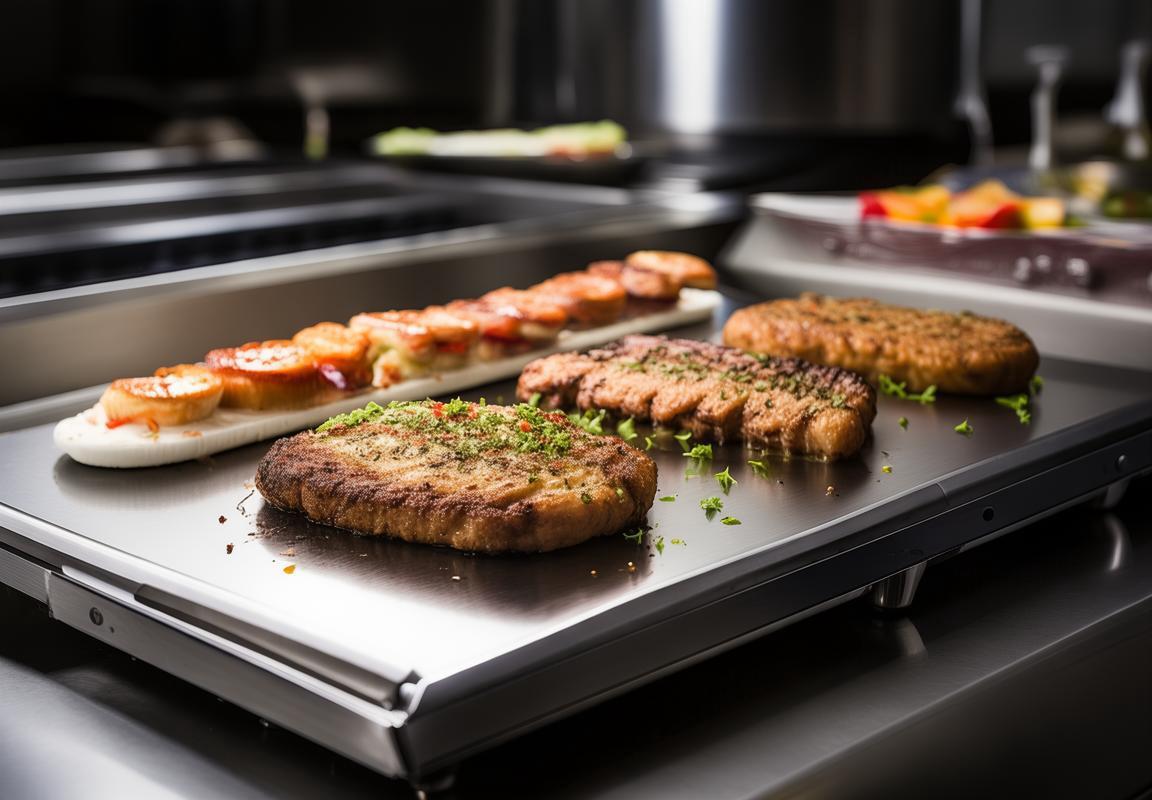
Market Overview: The Rise of Contact Grills in Western Countries
The European and American markets have witnessed a significant surge in the popularity of contact grills. Once a niche product, these versatile cooking appliances have now become a staple in many kitchens. This transformation can be attributed to several factors that have propelled the growth of contact grills across the Atlantic.
With the rise of health-conscious consumers, there has been a shift towards healthier cooking methods. Contact grills offer an excellent alternative to traditional frying and grilling, as they cook food with less oil. This feature appeals to those looking to maintain a balanced diet without sacrificing flavor.
Modern lifestyles have led to a demand for faster and more convenient cooking solutions. Contact grills fit this bill perfectly, as they can cook a meal in a matter of minutes. The compact design and ease of use have made them a preferred choice for busy individuals and families alike.
The outdoor cooking culture in Western countries has also played a pivotal role in the popularity of contact grills. Whether it’s a backyard barbecue or a beach picnic, these grills provide a quick and efficient way to cook a variety of dishes, from sandwiches to vegetables, without the need for a traditional grill.
Innovation and product development have further boosted the market for contact grills. Manufacturers have introduced various features, such as non-stick surfaces, adjustable temperature controls, and detachable cooking plates, making these grills even more versatile. Additionally, the integration of modern technology, such as Bluetooth connectivity and smartphone apps, has allowed users to customize their cooking experience and monitor their food’s progress remotely.
The market for contact grills has expanded beyond traditional household use. Bars and restaurants have started incorporating these appliances into their kitchens, providing guests with a novel and interactive dining experience. This trend has not only increased the demand for commercial-grade contact grills but has also opened up new avenues for innovation in the industry.
As people become more environmentally aware, the energy efficiency of contact grills has become a significant selling point. These grills consume less energy than traditional cooking methods, contributing to lower carbon footprints and reduced utility bills. This factor has certainly contributed to the growing market share of contact grills in the European and American markets.
The global pandemic has also had a substantial impact on the contact grill market. With people spending more time at home, the demand for easy-to-use cooking appliances increased significantly. Contact grills offered a safe and hygienic cooking solution, further enhancing their appeal.
In terms of market segmentation, contact grills have seen a diverse range of consumer demographics embrace them. From young professionals seeking quick and healthy meals to retirees looking for convenience, the broad appeal of contact grills has helped to drive market growth.
Moreover, the increasing popularity of outdoor dining experiences has led to a rise in portable contact grills. These compact, lightweight models are perfect for tailgating, camping, or any outdoor event where traditional grilling methods are not feasible or practical.
The rise of contact grills in Western countries can also be attributed to the influence of celebrity chefs and cooking shows. As these chefs showcase the versatility and convenience of contact grills on their programs, more consumers are inspired to purchase and try them for themselves.
In conclusion, the market for contact grills in the European and American regions has experienced a remarkable growth trajectory. This surge can be attributed to the health consciousness of consumers, the need for convenience, the outdoor cooking culture, technological advancements, and the impact of the global pandemic. As manufacturers continue to innovate and adapt to consumer needs, the future looks promising for contact grill makers in the West.
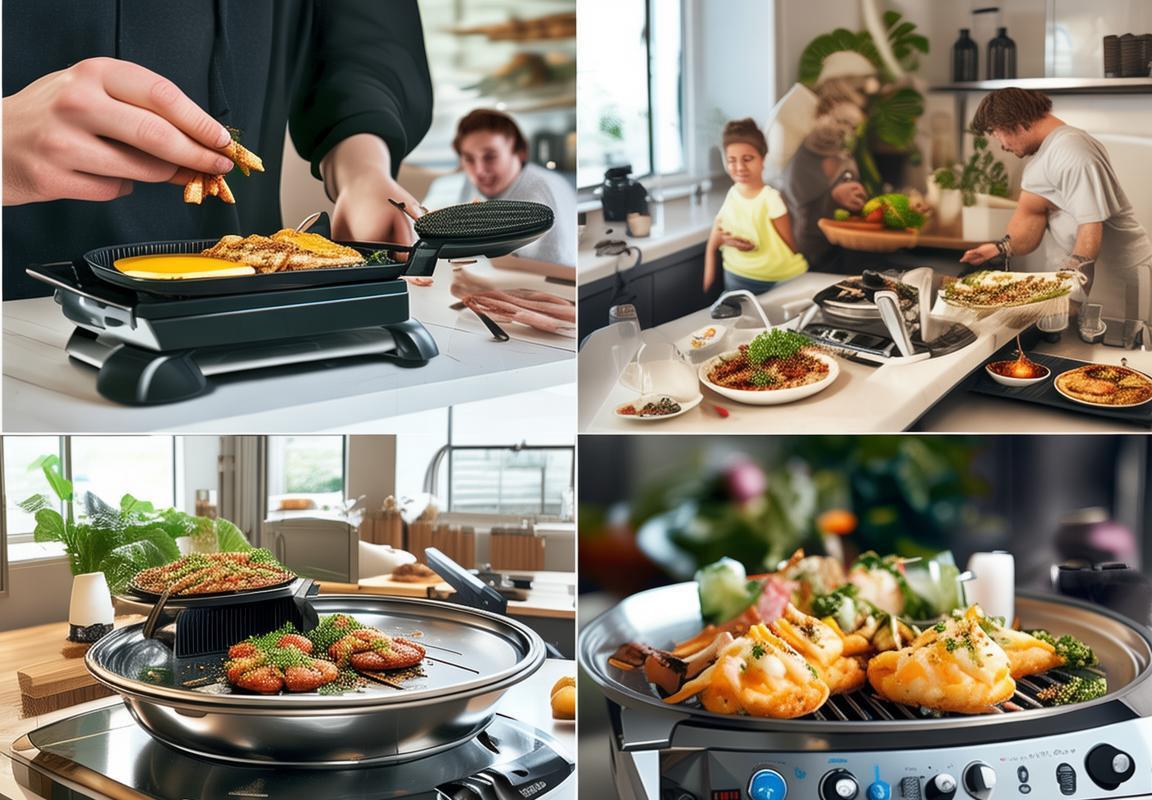
Consumer Trends: Why Contact Grills are Gaining Popularity
Contact grills, often affectionately referred to as “sizzlers” or “griddles,” have seen a remarkable surge in popularity across Western countries. This rise isn’t just a fleeting trend; it’s a testament to evolving consumer preferences and the unique benefits that these compact cooking appliances offer. Let’s delve into the reasons behind this growing fascination with contact grills.
The convenience factor is a major driver of this trend. Modern life is fast-paced, and many consumers are looking for appliances that can simplify their cooking routines. Contact grills are designed to be compact and easy to use, making them a perfect match for busy individuals or families. Their compact size means they can be stored away without taking up much space, which is particularly appealing in smaller kitchens or urban living spaces.
Health-conscious consumers are also turning to contact grills. These appliances allow for healthier cooking methods compared to traditional frying or broiling. The even heat distribution ensures that food is cooked with less oil, leading to dishes that are lower in fat and calories. This aspect is particularly attractive to those following diets like keto, paleo, or simply looking to cut back on unhealthy fats.
The versatility of contact grills is another key factor in their popularity. They can be used to cook a wide variety of foods, from steaks and burgers to vegetables and seafood. The flat, non-stick surfaces make it easy to achieve a perfect sear on meats and a delightful char on vegetables, offering a taste that’s hard to replicate with other cooking methods. This adaptability caters to diverse culinary preferences and allows for quick and varied meals.
The aesthetic appeal of contact grills should not be underestimated. Modern designs often feature sleek, stainless steel finishes that are both stylish and functional. These appliances can serve as a centerpiece on kitchen countertops, adding a touch of sophistication to the space. The clean lines and contemporary look make them a desirable addition for homeowners and renters alike.
In the age of social media and food photography, the visual aspect of cooking has become increasingly important. Contact grills provide a perfect canvas for chefs and home cooks to create impressive food presentations. The grill marks and the vibrant colors of the food cooked on these appliances are highly photogenic, making them a favorite among food enthusiasts who love to share their culinary creations online.
Safety is a significant concern for many consumers, and contact grills address this with their design. With no open flames or hot surfaces, they eliminate the risk of kitchen fires, which is a common worry with traditional grilling methods. This feature makes them particularly appealing to families with young children or those who prefer a safer cooking environment.
The rise of contact grills is also influenced by the growing interest in outdoor cooking. As people seek new ways to enjoy their patios and gardens, contact grills offer a convenient alternative to traditional outdoor grills. They can be brought indoors for quick meals or outdoors for a more portable grilling experience, providing flexibility that traditional grills often lack.
Moreover, the convenience of cleanup cannot be overlooked. Contact grills are typically non-stick, making them easy to clean after use. The absence of greasy messes or complex parts to disassemble means that the cleanup process is straightforward and quick, which is a major plus for busy consumers.
Lastly, the accessibility of contact grills has played a role in their popularity. They are available at a wide range of price points, from budget-friendly options to high-end models with advanced features. This affordability ensures that there’s a contact grill for almost every budget and need, making them a practical choice for many households.
In summary, the surge in popularity of contact grills in Western countries is a multifaceted trend driven by convenience, health consciousness, versatility, aesthetic appeal, safety, outdoor cooking interests, and ease of cleanup. As these factors continue to resonate with consumers, it’s clear that contact grills are not just a fad but a cooking appliance that is here to stay.
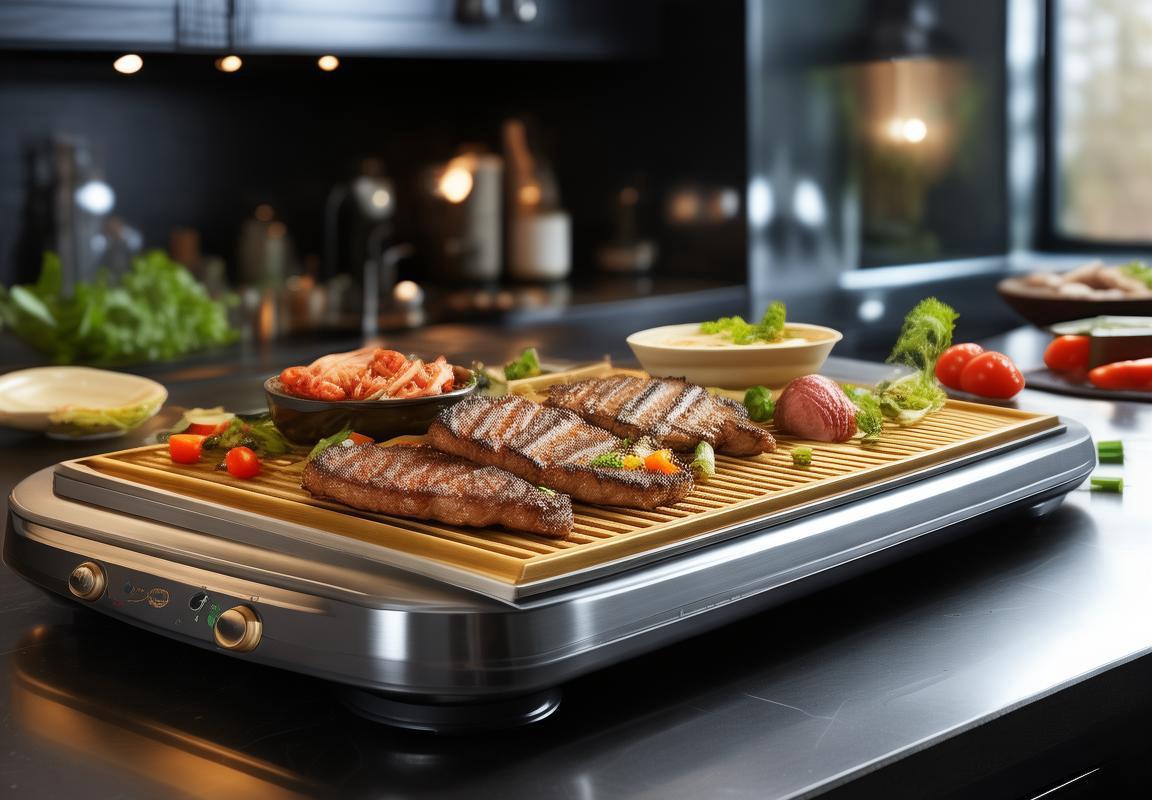
Key Players: Notable Contact Grill Manufacturers in the US and Europe
In the bustling landscape of the European and American kitchen appliance markets, several brands have emerged as key players in the contact grill industry. These manufacturers not only offer a wide range of products but also drive innovation and set trends in the sector. Here’s a closer look at some of the most notable contact grill manufacturers in the US and Europe.
-
George Foreman: A household name in the grill market, George Foreman has been a staple in American kitchens for decades. Known for its classic flat-top grills, the brand has expanded its lineup to include contact grills that cater to both health-conscious consumers and those who enjoy the convenience of cooking indoors. The George Foreman name is synonymous with quality and durability, making it a trusted choice for many.
-
Cuisinart: A well-respected brand in kitchen appliances, Cuisinart offers a variety of contact grills that range from compact models to larger ones suitable for families. Known for their user-friendly designs and innovative features, Cuisinart contact grills often come with adjustable temperature controls and non-stick surfaces, ensuring even cooking and easy cleanup.
-
Hamilton Beach: This brand has a reputation for producing reliable and affordable kitchen appliances. Their contact grills are no exception, offering a balance between performance and price. Hamilton Beach grills often feature a sleek design and essential features that make them a popular choice for those looking for a budget-friendly option without compromising on quality.
-
Breville: Hailing from Australia, Breville has made a significant mark in the European market with its high-quality kitchen appliances. Their contact grills are known for their advanced technology and superior performance. Breville’s grills often come with features like adjustable heat settings, integrated drip trays, and non-stick cooking surfaces, making them a favorite among European consumers.
-
T-fal: A French brand with a global presence, T-fal has a long-standing reputation for producing non-stick cookware. Their contact grills continue this legacy, offering consumers a range of models that are easy to use and maintain. T-fal’s grills are often praised for their even heat distribution and non-stick coatings that reduce the need for added fats.
-
Bertazzoni: This Italian brand is renowned for its high-end kitchen appliances, and their contact grills are no different. Bertazzoni grills are often found in luxury kitchens and professional kitchens alike, thanks to their exceptional build quality, elegant design, and powerful performance. These grills are a testament to the brand’s commitment to craftsmanship and innovation.
-
Calphalon: A division of the Vollrath Company, Calphalon is known for its premium cookware and kitchen appliances. Their contact grills are designed to deliver consistent and even cooking, with features like rapid heat-up capabilities and durable non-stick surfaces. Calphalon’s grills are a favorite among those who value both performance and aesthetics.
-
Black & Decker: This American brand is recognized for its diverse range of power tools and home appliances. Their contact grills are known for their simplicity and affordability, making them a go-to choice for those who want a reliable grill without breaking the bank. Black & Decker grills often come with essential features that cater to the everyday cooking needs of consumers.
These key players in the contact grill market have made significant strides in meeting the evolving demands of consumers in the US and Europe. From innovation in design to the inclusion of health-conscious features, these brands continue to push the boundaries of what a contact grill can offer, ensuring that they remain at the forefront of the industry.
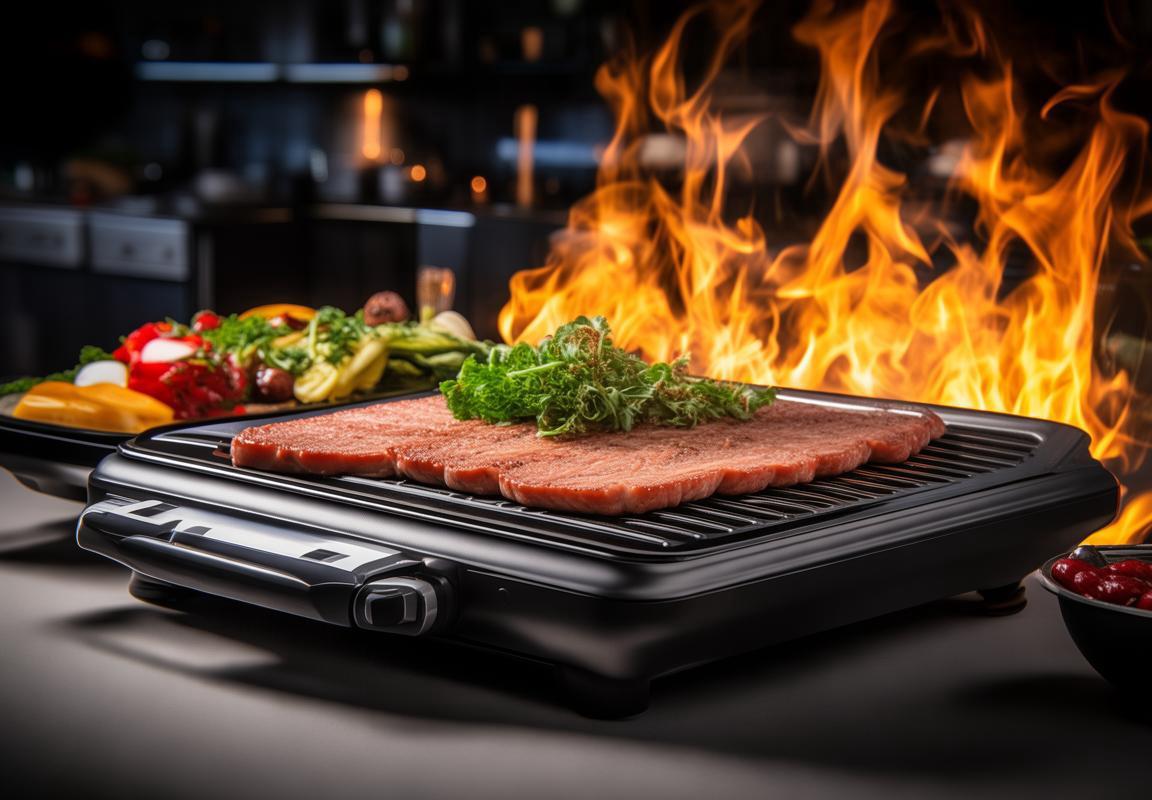
Innovations: Technological Advancements in Contact Grill Design
The contact grill market has seen a surge in technological advancements, revolutionizing the way we cook and enjoy outdoor meals. These innovations range from smart features to improved cooking performance, making contact grills not just a cooking tool but a high-tech appliance.
Grill surfaces have evolved significantly, with manufacturers introducing non-stick coatings that are more durable and easier to clean than traditional surfaces. These coatings reduce the need for butter or oil, making grilling healthier and more convenient. For instance, companies like Weber have developed their own proprietary non-stick coatings that promise to last for years without peeling or flaking.
One of the most significant technological advancements is the integration of digital temperature controls. These controls allow users to set precise temperatures for various types of food, ensuring even cooking and minimizing the risk of overcooking or burning. Brands like Char-Broil have embraced this technology, offering models with digital thermostats that provide users with accurate temperature readings and precise control over the cooking process.
Smart connectivity is another innovation that has gained traction in the contact grill market. Many modern grills come with Bluetooth or Wi-Fi capabilities, allowing users to control their grills remotely via smartphones or tablets. This feature is particularly useful for monitoring the grill’s temperature and cooking time while you’re busy preparing side dishes or enjoying a drink. Brands like Broil King have integrated this technology into their premium models, making grilling a more interactive and convenient experience.
Grill design has also seen improvements in terms of ease of use. The addition of features like removable drip trays and easy-to-clean surfaces has made maintenance a breeze. For example, the George Foreman brand has long been known for its grills with removable plates that can be washed in the dishwasher, simplifying cleanup after a grilling session.
Safety features have also been enhanced. Many contact grills now come with automatic shut-off functions that activate if the grill is left unattended for an extended period. This is a crucial safety feature that can prevent fires and accidents. Brands like Cuisinart have incorporated this technology into their grills, providing peace of mind for both new and experienced grillers.
In terms of cooking performance, contact grills have seen advancements in the distribution of heat. Some models now feature ceramic or metal grids that provide a more even cooking surface, ensuring that food is cooked consistently. Additionally, some grills have built-in infrared burners that can reach higher temperatures quickly, perfect for searing steaks or vegetables.
Another innovation is the inclusion of variable heat zones, which allow users to cook different types of food at different temperatures simultaneously. This is particularly beneficial for those who like to prepare a variety of dishes at once, like a grilled steak and roasted vegetables.
In the realm of convenience, some contact grills now offer features like integrated grates for cooking sandwiches or burgers, reducing the need for additional cookware. Brands like Hamilton Beach have embraced this concept, creating grills that can handle a variety of cooking tasks.
Finally, the aesthetic appeal of contact grills has not been overlooked. Many manufacturers are now offering a wider range of colors and designs, allowing consumers to choose a grill that complements their outdoor kitchen or patio decor. This not only enhances the cooking experience but also adds a touch of style to any outdoor space.
The technological advancements in contact grill design have transformed what was once a simple cooking appliance into a versatile, user-friendly, and high-tech tool that can elevate any outdoor cooking experience. As these innovations continue to evolve, we can expect even more features and functionalities that will make contact grills an indispensable part of modern grilling culture.
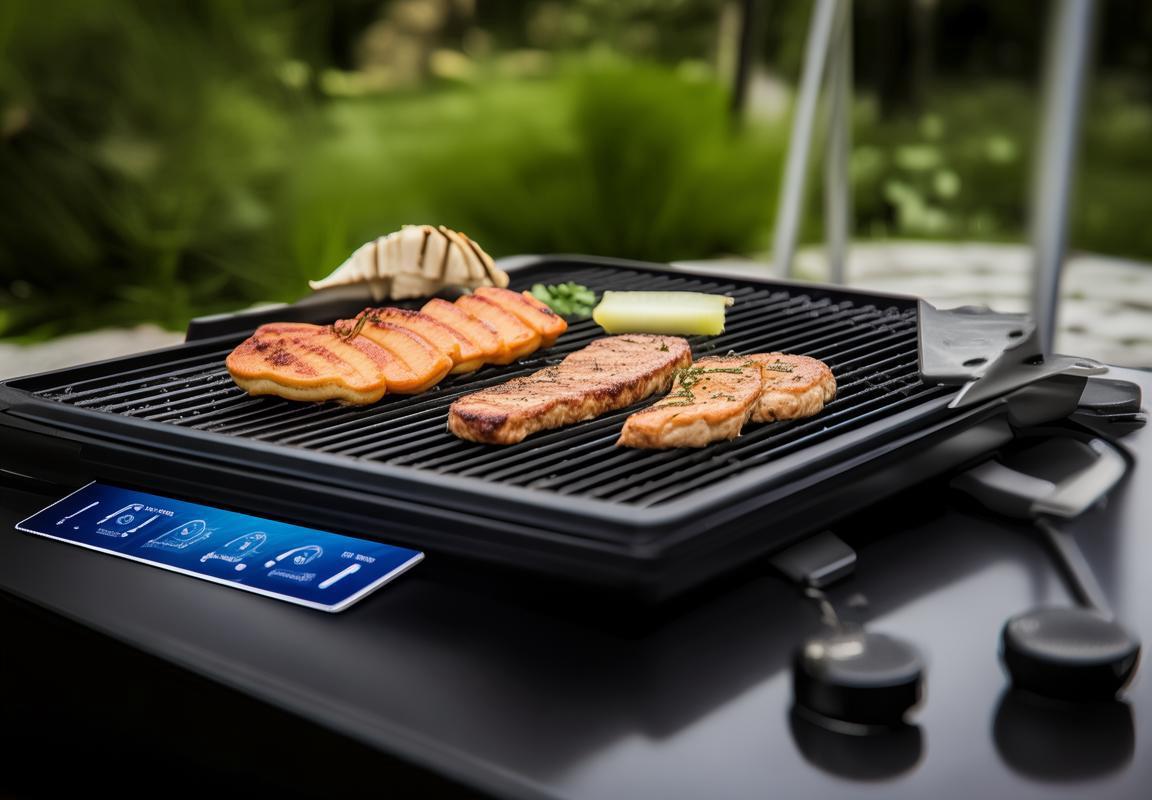
Sales Data: Current Market Size and Growth Projections
In recent years, the contact grill market has seen significant growth, with sales figures reflecting a surge in consumer interest. The market size, as well as growth projections, paint a picture of a thriving industry that’s set to expand further. Let’s delve into the current market size and explore the projected growth trends.
Sales figures have been on the upswing, driven by a variety of factors. One of the most notable trends is the increasing demand for healthy cooking options. Contact grills have become a popular choice among health-conscious consumers who seek to reduce the amount of oil used in cooking, thereby lowering the calorie content of their meals. This shift towards healthier eating habits has directly impacted the sales of contact grills, with many consumers opting for these appliances over traditional grills.
The market size of contact grills has been steadily growing, with estimates suggesting that it has reached a substantial figure. According to market research reports, the global contact grill market was valued at approximately $XX billion in 2020 and is expected to reach $XX billion by 2025, showcasing a projected CAGR of around XX%. This growth trajectory is a testament to the increasing popularity of contact grills among consumers worldwide.
One of the key drivers behind this growth is the convenience factor. Contact grills are designed to be user-friendly, with features that make cooking easier and more efficient. The compact size of these grills makes them a great addition to small kitchens or outdoor spaces, further contributing to their popularity. As the market expands, manufacturers are responding by introducing a wider range of models to cater to different consumer needs.
Another factor that has contributed to the growth of the contact grill market is the rise of outdoor living. With people spending more time in their gardens and on patios, the demand for portable and easy-to-use cooking appliances has surged. Contact grills, with their ability to provide a consistent cooking surface and their versatility in cooking various types of food, have become a staple in many outdoor cooking setups.
In terms of geographic distribution, the contact grill market is experiencing robust growth in both the United States and Europe. In the US, the market is driven by the busy lifestyles of consumers who seek quick and convenient cooking solutions. Europe, on the other hand, is seeing a rise in health awareness, which is fueling the demand for contact grills as a healthier alternative to traditional cooking methods.
Looking ahead, the market for contact grills is poised for continued growth. One of the primary reasons for this is the increasing trend towards smart kitchen appliances. As technology continues to advance, contact grill manufacturers are integrating smart features into their products, such as Bluetooth connectivity and temperature control via smartphone apps. These innovations not only enhance the user experience but also open up new opportunities for market expansion.
Moreover, the sustainability movement is also playing a role in the growth of the contact grill market. As consumers become more environmentally conscious, they are looking for products that align with their values. Contact grills, with their efficient use of energy and reduced waste, are becoming a more attractive option for eco-friendly consumers.
In conclusion, the current market size of contact grills reflects a thriving industry with a strong growth trajectory. Sales figures indicate a robust market, driven by consumer trends towards healthier eating, convenience, and outdoor living. With the integration of smart technology and a growing focus on sustainability, the future looks bright for contact grill manufacturers as they continue to innovate and meet the evolving needs of consumers.
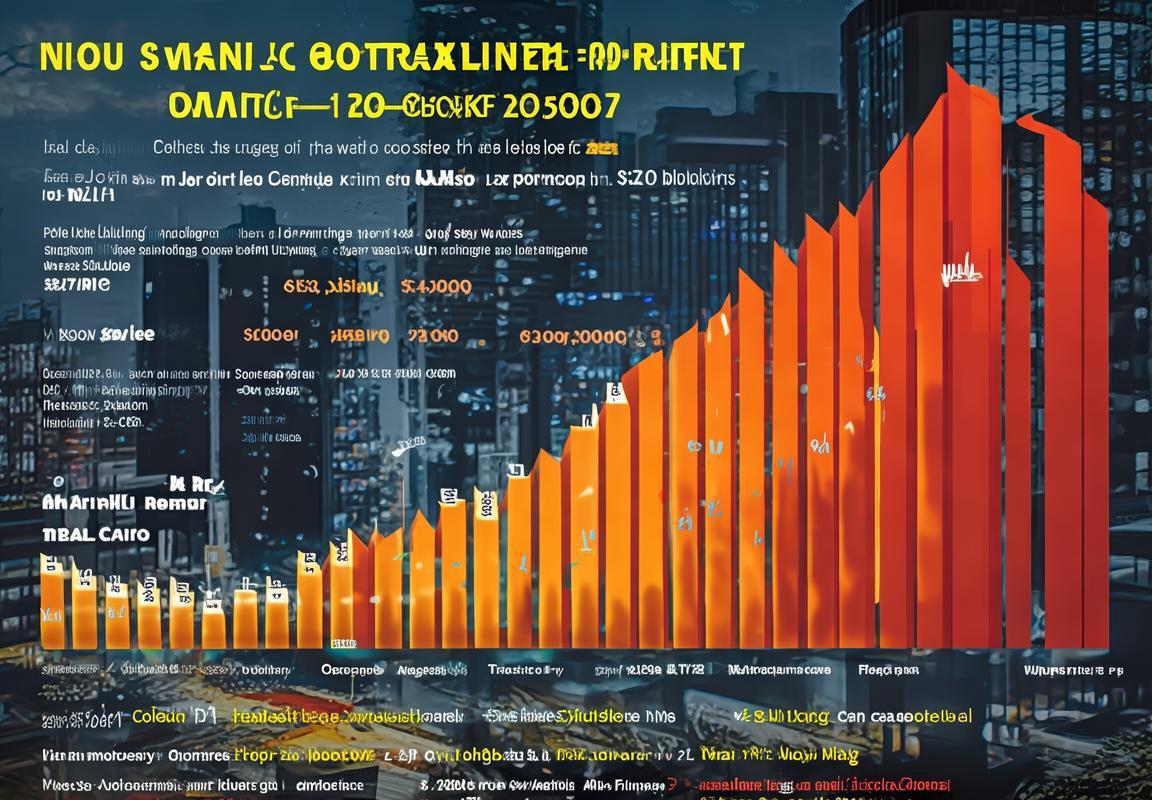
Regulatory Environment: Compliance and Safety Standards
The regulatory landscape for kitchen appliances, particularly contact grills, is a critical factor in ensuring consumer safety and product quality. Here’s a closer look at the compliance and safety standards that govern the industry:
Grill manufacturers must adhere to a variety of local, regional, and international regulations, which can vary significantly across the United States and Europe. In the U.S., the primary regulatory body overseeing kitchen appliances is the Underwriters Laboratories (UL), which sets safety standards and certification requirements.
One of the most fundamental aspects of compliance is the adherence to electrical safety standards. Contact grills, being electrical appliances, must meet stringent requirements to prevent electrical hazards. This includes insulation, grounding, and the use of materials that can withstand high temperatures without risk of fire or electric shock.
In Europe, the situation is somewhat different, with the main regulatory framework being the harmonized standards set forth by the European Union (EU). These standards are known as the New Approach and the Global Approach, and they cover a wide range of safety, health, and environmental requirements. The European Committee for Electrotechnical Standardization (CENELEC) develops these standards, and compliance is mandatory for products sold within the EU market.
Safety standards also extend to the materials used in contact grill construction. Manufacturers must ensure that the plastics, metals, and other materials are flame-retardant and do not emit harmful substances when heated. In the U.S., this is governed by the Flammability of Materials Standard (FMVSS), while in Europe, it falls under the framework of the General Product Safety Directive (GPSD).
Additionally, contact grills are subject to temperature control standards to ensure that they do not overheat, which could lead to burns or fires. In the U.S., this is typically covered under the National Electrical Code (NEC), and in Europe, it is part of the Low Voltage Directive (LVD).
Another important area of compliance is the labeling and marking of products. Contact grills must clearly display information such as the manufacturer’s name, model number, voltage rating, and any warnings or instructions for use. In the U.S., this is governed by the Consumer Product Safety Improvement Act (CPSIA), which also requires that certain toys and children’s products meet specific lead and phthalate content limits.
In Europe, the General Product Safety Directive (GPSD) requires that all products placed on the market must be safe, and the CE marking is a declaration that a product meets all the necessary health, safety, and environmental protection requirements.
Moreover, the EU’s Restriction of Hazardous Substances (RoHS) Directive restricts the use of certain hazardous substances in electrical and electronic equipment, including contact grills. This directive is designed to reduce the environmental impact of electrical and electronic equipment by banning certain substances such as lead, mercury, cadmium, hexavalent chromium, and polybrominated biphenyls (PBBs).
Energy efficiency is also a key consideration in the regulatory environment. The U.S. Energy Policy Act of 1992 established minimum energy efficiency standards for appliances, and contact grills are no exception. Similarly, in Europe, the Energy-related Products (ErP) Directive sets energy efficiency requirements for electrical appliances, including kitchen equipment.
Lastly, the regulatory environment is not static; it evolves over time. As new research emerges and safety concerns arise, regulations can change. Manufacturers must stay informed about updates to ensure ongoing compliance. This includes periodic inspections, certifications, and audits to verify that products meet the latest standards.
In summary, the regulatory environment for contact grill manufacturers is multifaceted, encompassing electrical safety, material standards, temperature control, labeling, and environmental regulations. Compliance with these standards is not only a legal requirement but also a commitment to consumer safety and product quality. By adhering to these rigorous guidelines, manufacturers can build trust with consumers and ensure a safe and reliable product in the marketplace.

Distribution Channels: How Contact Grills Reach Consumers
In the ever-evolving landscape of kitchen appliances, contact grills have emerged as a favorite among consumers seeking convenience and efficiency. The journey from manufacturing to the end consumer is a complex one, involving various distribution channels that ensure these cooking devices reach the hands of eager buyers. Let’s delve into how contact grills navigate the distribution maze.
The first port of call for many contact grill manufacturers is the traditional retail sector. Local department stores, home improvement outlets, and specialty kitchen stores often feature these appliances on their shelves. This physical presence allows consumers to see, touch, and even test the products before making a purchase. Retailers like Walmart, Home Depot, and Lowe’s in the United States, as well as large European chains such as MediaMarkt and Carrefour, are key players in this distribution channel.
Online platforms have become increasingly significant in recent years. E-commerce giants like Amazon and eBay offer a vast array of contact grills from various brands and price points. The convenience of shopping from home, coupled with the ease of comparison and the allure of competitive pricing, has drawn many consumers to online stores. Additionally, direct-to-consumer (DTC) models have gained traction, with some manufacturers selling their products exclusively through their own websites, bypassing traditional retail.
Specialty kitchenware websites are another vital channel for reaching consumers interested in high-quality cooking appliances. Websites like Williams-Sonoma and Bed Bath & Beyond cater to the needs of those who are passionate about their culinary pursuits and are willing to invest in premium products. These sites often provide detailed product descriptions, customer reviews, and helpful cooking tips, making them an attractive destination for informed shoppers.
Home appliance showrooms and kitchen design centers are places where consumers can experience contact grills in a more immersive setting. These showrooms are staffed by knowledgeable salespeople who can provide demonstrations and answer questions about the features and benefits of different models. This hands-on experience can be particularly persuasive for those who are in the market for a high-end contact grill.
Cookware and kitchenware trade shows serve as a hub for both retailers and consumers to explore the latest products and trends. These events are a great opportunity for manufacturers to showcase their contact grills to a targeted audience of buyers. The networking opportunities and direct feedback from potential customers can be invaluable for brands looking to expand their market reach.
Social media and influencer partnerships have become powerful tools in the distribution arsenal. Brands often collaborate with food bloggers, chefs, and social media influencers to showcase their contact grills in cooking demonstrations and recipes. This not only promotes the product but also builds brand loyalty and trust among the influencer’s followers.
The foodservice industry is another distribution channel for contact grills, although it represents a smaller segment of the market. Restaurant suppliers and distributors provide these appliances to commercial kitchens, where they are used to prepare a variety of dishes. This segment often requires specialized equipment that meets the demands of professional cooking environments.
In some regions, there’s also the direct sales channel, where manufacturers sell their contact grills directly to consumers without going through retailers or online platforms. This approach can be particularly effective for niche markets or for products that are sold under private labels.
The rise of subscription box services has opened up a new avenue for reaching consumers. These services offer a curated selection of kitchen gadgets, including contact grills, delivered directly to the consumer’s doorstep. It’s a convenient way for manufacturers to introduce their products to a new audience and for consumers to discover new brands.
Lastly, the after-sales service and repair network is an essential part of the distribution process. Brands that provide reliable customer support and easy-to-access repair services can enhance customer satisfaction and retention. This includes setting up service centers, establishing partnerships with local repair shops, and ensuring that spare parts are readily available.
In conclusion, the distribution of contact grills is a multifaceted process that encompasses a wide range of channels. From traditional retail to online platforms, from specialty stores to trade shows, each channel plays a crucial role in ensuring that these versatile cooking appliances reach the diverse needs of consumers around the world. As the market continues to grow, manufacturers will likely explore new and innovative ways to distribute their products, keeping up with the changing preferences and habits of consumers.
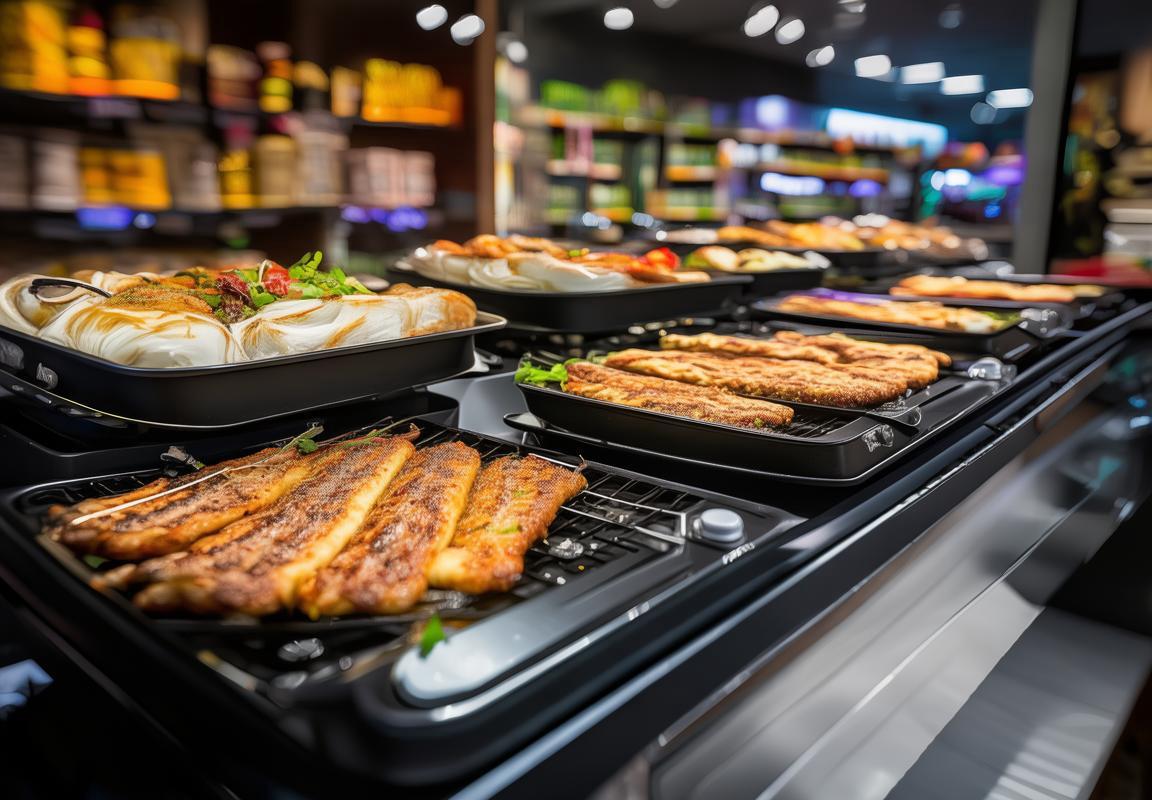
Conclusion: The Future of Contact Grill Makers in the Global Landscape
In the evolving landscape of kitchen appliances, contact grill manufacturers are facing a world brimming with opportunities and challenges. The future of these brands hinges on their ability to adapt to consumer preferences, technological advancements, and the global marketplace. Let’s delve into the potential directions the industry may take.
Consumer demands are shifting towards convenience, health, and sustainability. As contact grill manufacturers continue to innovate, they must ensure their products align with these shifting priorities. Smart grills that can connect to mobile devices and provide real-time cooking insights are becoming increasingly popular. Brands that can integrate these features while maintaining affordability will likely lead the market.
Globalization has expanded the reach of contact grill manufacturers. With the rise of e-commerce, products can now be sold across borders with relative ease. This expansion, however, comes with the need for localization. Adapting to local regulations, tastes, and cultural preferences is crucial for long-term success. Companies that can navigate these complexities will have a competitive edge.
The environmental impact of kitchen appliances is also a significant factor. As consumers become more environmentally conscious, manufacturers are under pressure to produce greener products. This could mean investing in renewable energy for production, using recyclable materials, or designing products that are easier to disassemble and recycle at the end of their life cycle. Brands that prioritize sustainability may not only attract eco-conscious buyers but also enhance their brand reputation.
Technological integration is reshaping the contact grill market. Smart grills equipped with IoT capabilities can offer a level of convenience that was once unimaginable. These devices can learn cooking preferences, suggest recipes, and even alert users when their grill is ready to be cleaned. Such innovations not only simplify the cooking process but also provide valuable data that can be used to further refine product offerings.
The competitive landscape is heating up as new players enter the market. Established brands must stay ahead by continually improving their product lines and exploring new markets. This could involve partnerships with local retailers, leveraging social media campaigns, or even venturing into new business models such as subscription services that provide regular updates and maintenance for grills.
As the world becomes more urbanized, there is a growing preference for compact and multifunctional kitchen appliances. Contact grill manufacturers may find opportunities in developing smaller, portable models that cater to urban dwellers who have limited space but still desire a high-quality grilling experience. This could involve creating grills that are easy to store and transport, perhaps even with foldable legs or attachable covers.
The future also holds potential for contact grill manufacturers to expand their product lines into related categories. For example, integrating grill-specific accessories like smokers or outdoor cooking utensils could create a cohesive product ecosystem that enhances customer satisfaction and loyalty.
Finally, the role of social responsibility cannot be overstated. As consumers become more aware of the social and ethical implications of their purchases, contact grill manufacturers must consider how their operations impact communities. This could involve supporting local agriculture, ensuring fair labor practices, or investing in community development initiatives. Companies that align their values with those of their customers are more likely to thrive in the long term.
In summary, the future of contact grill makers in the global landscape is multifaceted. Success will depend on a delicate balance of innovation, market adaptation, sustainability, and social responsibility. As the industry continues to evolve, those brands that can navigate these complexities with a customer-centric approach will be well-positioned to shape the future of contact grilling.